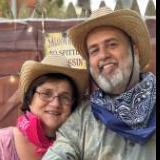
-
entries
192 -
comments
221 -
views
72,121
About this blog
Glimpses of Wonder™: Reflections on Jehovah’s Remarkable Design
An invitation to slow down, look closer, and be amazed.
Everywhere we turn, Jehovah’s handiwork speaks—sometimes in whispers, sometimes in wide-eyed wonder. Glimpses of Wonder™ takes you on a journey through the marvels of creation: from the clever mechanics of a horse’s leg to the glow of deep-sea creatures, from the balance of brain chemistry to the elegance of a falling leaf.
Some entries will make you laugh. Some will make you pause. But all of them aim for the same thing: to stir up awe—and give credit where it’s due.
Blending science, storytelling, and a deep love for the Creator, this series doesn’t just celebrate the natural world. It invites you to see what’s always been there… a little differently.
Entries in this blog
Dark Wings, Bright Minds — a Glimpse of Wonder entry™ —
When Beauty First Opened Her Eyes — a Glimpse of Wonder entry™ —
When One Voice Speaks Many Languages — a Glimpse of Wonder entry™ —
The Penguins’ Open Path — a Glimpse of Wonder entry™ —
What the Whales Remembered — a Glimpse of Wonder entry™ —
The Wonder That Bends — a Glimpse of Wonder entry™ —

dljbsp in Plant Life
The Quiet Beach and the Sea Turtles — a Glimpse of Wonder entry™ —
The Mountains That Reappeared — a Glimpse of Wonder entry™
The Silence That Spoke — a Glimpse of Wonder entry™ —
The Song You Can’t Hold — But That Holds You — a Glimpse of Wonder entry™ —
The Smallest Tick of Time — a Glimpse of Wonder entry™ —
The Wonder of Simultaneity — a Glimpse of Wonder entry™ —
As Plain as the Nose on Your Face — a Glimpse of Wonder entry™ —
Elimination of Extra Dimensions — a Glimpse of Wonder entry™ —
Surfing Giants of Loango — a Glimpse of Wonder entry™ —
The Fingerprints of God’s Precision — a Glimpse of Wonder entry™ —
The Spiraling Horns of the Markhor — a Glimpse of Wonder entry™ —
The Scream Beneath the Armor — a Glimpse of Wonder entry™ —
Always Moving, Always Breathing — a Glimpse of Wonder entry™ —
The Parrot Who Talked Too Much — and Outlived Everyone — a Glimpse of Wonder entry™ —
Passengers in the Current — And the God Who Carries Us — a Glimpse of Wonder entry™ —
Riding the Invisible Sky — a Glimpse of Wonder entry™ —
Black for a Reason — a Glimpse of Wonder entry™ —
The Strength Within — a Glimpse of Wonder entry™ — The Waiting Curve - Series 12 of 12
About JWTalk.net - Jehovah's Witnesses Online Community
Since 2006, JWTalk has proved to be a well-moderated online community for real Jehovah's Witnesses on the web. However, our community is not an official website of Jehovah's Witnesses. It is not endorsed, sponsored, or maintained by any legal entity used by Jehovah's Witnesses. We are a pro-JW community maintained by brothers and sisters around the world. We expect all community members to be active publishers in their congregations, therefore, please do not apply for membership if you are not currently one of Jehovah's Witnesses.